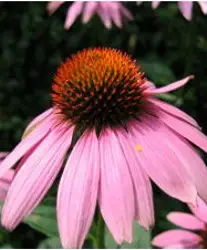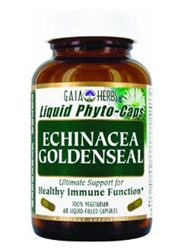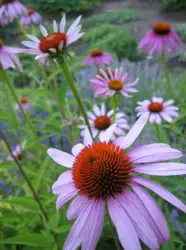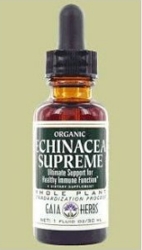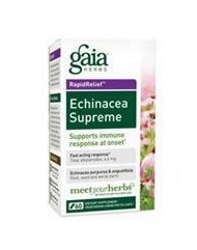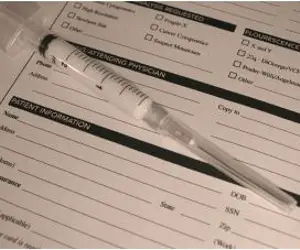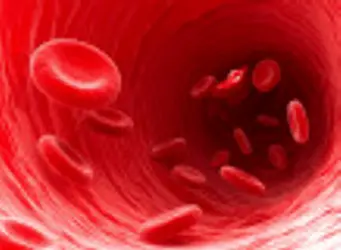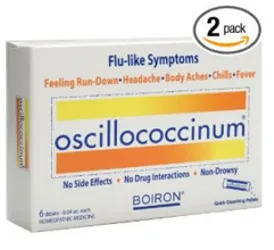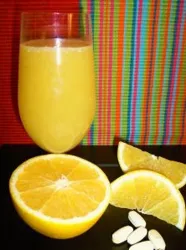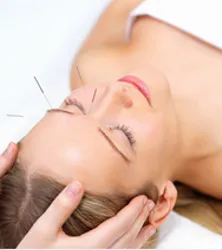
What Is Echinacea?
What Is Echinacea?
At this time of year colds and influenza becomes a big concern. Especially during the Holiday season when people mingle in larger groups than normal.
Due to the economy, changes in health insurance coverage and other issues, more and more people are searching for alternative treatments for minor health concerns such as colds and flu viruses.
Echinacea has become more popular as an option and is often combined with golden seal as a herbal alternative for amping up the immune system to block cold and flu viruses from taking hold.
Used By Native Americans
Echinacea angustifolia was widely used by the Native North Americans on the Plains for its general medicinal qualities.
Native Americans learned of E. angustifolia by observing elk seeking out the plants and consuming them when sick or wounded, and identified those plants as elk root.
Echinacea was one of the basic antimicrobial herbs of eclectic medicine from the mid 19th century through the early 20th century, and its use was documented for snakebite, anthrax, and for relief of pain.
In the 1930s echinacea became popular in both Europe and America as a herbal medicine.
Echinacea Is A Flowering Plant
Of course echinacea still falls under the category of folk remedy. You should always consult with your primary health care physician before taking any type of herbs or alternative treatments.
The generic name Echinacea is rooted in a Greek word - echinos, meaning sea urchin. It references the spiky appearance and feel of the flower heads. Echinacea plants also reseed in the fall. New flowers will grow where seeds have fallen from the prior year.
Echinacea pronounced ek-i-NAY-sha is a genus of herbaceous flowering plant in the Asteraceae daisy family and is a popular alternative herbal style of treatment believed by many to help with cold and influenza prevention and treatment.
Species Of Echinacea
Echinacea is also known as purple cone flowers, a North American plant group with nine species, three of which are relatively believed to help with cold and influenza preventatives.
Cold And Flu Properties
The three species valued for their cold and flu properties include:
1. Echinacea angustifolia – Narrow-leaf Coneflower
2. Echinacea pallida – Pale Purple Coneflower3. Echinacea purpurea – Purple Coneflower, Eastern Purple Coneflower
[amazon-product text="Echinacea Goldenseal Capsules " type="text"]B000PSYO3G[/amazon-product]
The flowering plant is generally found in eastern and central North America and thrives in moist to dry prairies and open wooded areas. It blooms from early to late Summer and are tolerant of drought conditions.
Does Echinacea Really Work?
Some people swear by echinacea or combination remedies as their secret to preventing or minimizing the impact of colds and flu attacks. But does it really work for everyone who takes it? Absolutely not.
There is not one single remedy - prescription drug or alternative - which works 100% for all people of all ages.
There are a vast number of variable which have to be considered for any type of remedy. The same hold true for echinacea. While some fans of alternative treatment swear by it, others find it doesn't help them.
The truth of whether echinacea works or not and who it works for is generally a matter of personal experience. I personally have been taking echinacea or echinacea goldenseal formulations for close to 30 years and believe it helps. But it doesn't help some of my family and friends who have tried it.
After much research I found that the liquid caps available from Gaia Herbs work best for me. Herbal teas or herbal pills, not so much. Which confirms my opinion that everyone needs to do their own research, talk to their own health care professionals and make their own decisions.
Note: We do not sell Gaia Herbs at HairBoutique.com. I mention them because they work well for me. I am sure other brands may work just as well but I can not recommend any that I have not personally tried.
[amazon-product text="Gaia Herbs Echinacea" type="text"]B00016R0DS[/amazon-product]
Not A One Dose Treatment
Proponents of echinacea assert that it is not a "one-dose" treatment, and that in order to work effectively, a dose should be taken at the very first sign of any cold symptoms.
Subsequent doses are called for every two to four hours after the first dose, including during the overnight sleeping period, until the cold symptoms have disappeared.
The several species of echinacea differ in their precise chemical constitution, and may provide variable dosages of any active ingredients.
Possible Side Effects?
Also consult with your primary care physician before taking echinacea to make sure you don't have any side effects.
When taken by mouth, echinacea does not usually cause side effects. One of the most extensive and systematic studies to review the safety of echinacea products concluded that overall, "adverse events are rare, mild and reversible," with the most common symptoms being "gastrointestinal and skin-related."
Although more rare, echinacea may cause nausea, abdominal pain, diarrhea, itching and rash. Echinacea has also been linked to rare allergic reactions, including asthma, shortness of breath, and one case of anaphylaxis. Muscle and joint pain has been associated with echinacea, but it may have been caused by cold or flu symptoms for which the echinacea products were administered.
Isolated Cases Of Rare Side Effects
There are isolated case reports of very rare and idiosyncratic reactions including thrombocytopenic purpura, leucopenia, hepatitis, renal failure, and atrial fibrillation, although it is not clear that these were due to echinacea itself.
There are concerns that by stimulating immune function, echinacea could potentially exacerbate autoimmune disease and/or decrease the effectiveness of immunosuppresive drugs, but this warning is based on theoretical considerations rather than human data.
There have been no case reports of any drug interactions with echinacea and "the currently available evidence suggests that echinacea is unlikely to pose serious health threats for patients combining it with conventional drugs."
As a matter of manufacturing safety, one investigation by an independent consumer testing laboratory found that five of eleven selected retail echinacea products failed quality testing.
Four of the failing products contained levels of phenols below the potency level stated on the labels. One failing product was contaminated with lead.
[amazon-product text="Gaia Herbs Echinacea Supreme" type="text"]B0036THMWG[/amazon-product]
Scientific Reviews
Multiple scientific reviews, trials and meta-analyses have evaluated the published peer reviewed literature on the immunological effects of Echinacea.
Reviews of the medicinal effects of Echinacea are often complicated by the inclusion of a wide range of mixtures. Some formulas are based solely upon Echinacea while others are combinations.
Also, some formulations are offered in higher potency or delivery systems than others. Some use the roots versus other parts of the plants and some are offered as extracts and expressed juice.
There are also three of the nine species known to help with cold and flu conditions and may be used alone or in combination with each other.
Contradictory Claims Of Echinacea - It Works, It Doesn't Work
Evaluation of the literature within the field generally suffers from a lack of well-controlled trials, with many studies of lower quality. The results tend to be contradictory. Depending upon what studies you read, echinacea works or it has no effect.
A 2007 study by the University of Connecticut combined findings from 14 previously reported trials examining echinacea and concluded that echinacea can cut the chances of catching a cold by more than half, and shorten the duration of a cold by an average of 1.4 days.
A 2003 controlled double-blind study from the University of Virginia School of Medicine and documented in the New England Journal of Medicine stated that echinacea extracts had "no clinically significant effects" on rates of infection or duration or intensity of symptoms.
The effects held when the herb was taken immediately following infectious viral exposure and when taken as a prophylaxis starting a week prior to exposure.
An earlier University of Maryland review based on 13 European studies concluded that echinacea, when taken at first sign of a cold, reduced cold symptoms or shortened their duration.
Use Of Expressed Juice And Similar
The European Medicines Agency (EMEA) assessed the body of evidence and approved the use of expressed juice and dried expressed juice from fresh flowering aerial parts of Echinacea purpurea for the short-term prevention and treatment of the common cold.
According to their recommendations:
1. It should not be used for more than 10 days at a time.
2. Children under the age of one should not take it because they have immature immune systems.3. It is generally not recommended for children between 1 and 12 years of age.
4. Not recommended for use in pregnancy and during lactation.
Popular Beliefs And Traditional Use
Echinacea is popularly believed to be an immunostimulator, stimulating the body's non-specific immune system and warding off infections and also being utilized as a laxative. A study commonly used to support that belief is a 2007 meta-analysis in The Lancet Infectious Diseases.
The studies pooled in the meta-analysis used different types of echinacea, different parts of the plant, and various dosages. This review cannot inform recommendations on the efficacy of any particular type of echinacea, dosage, or treatment regimen. The safety of echinacea under long-term use is also unknown.
History Of Echinacea Use
Echinacea angustifolia was widely used by the early Native Americans for its general medicinal qualities. Echinacea was one of the basic antimicrobial herbs of eclectic medicine from the mid 19th century through the early 20th century, and its use was documented for snakebite, anthrax, and for relief of pain. In the 1930s echinacea became popular in both Europe and America as a herbal medicine.
According to Wallace Sampson, MD, its modern day use as a treatment for the common cold began when a Swiss herbal supplement maker was "erroneously told" that echinacea was used for cold prevention by Native Americans who lived in the area of South Dakota.
Although Native Americans didn't use echinacea to prevent the common cold, some Plains tribes did use echinacea to treat some of the symptoms that could be caused by the common cold.
The Kiowa used it for coughs and sore throats, the Cheyenne for sore throats, the Pawnee for headaches, and many tribes including the Lakotah used it as an analgesic.
Active Substances
Like most crude drugs from plant or animal origin, the constituent base for echinacea is complex, consisting of a wide variety of chemicals of variable effect and potency. Some chemicals may be directly antimicrobial, while others may work at stimulating or modulating different parts of the immune system.
All species have chemical compounds called phenols, which are common to many other plants. Both the phenol compounds cichoric and caftaric acids are present in E. purpurea, other phenols include echinacoside, which is found in greater levels within E. angustifolia and E. pallida roots than in other species.
When making herbal remedies, these phenols can serve as markers for the quantity of raw echinacea in the product. Other chemical constituents that may be important in echinacea health effects include alkylamides and polysaccharides.
Poor Process Control?
As with any herbal preparation, individual doses may vary significantly in active chemical composition.
In addition to poor process control which may affect inter- and intra-batch homogeneity, species, plant part, extraction method, and contamination or adulteration with other products all lead to variability between products.
Root Of Whole Plant?
As with any plant, the chemical makeup of echinacea is not consistent throughout the organism. In particular, the root has been promoted as containing a more efficacious mixture of active chemicals.
A 2003 study in the Journal of the American Medical Association (Taylor et al. 2003) found that when echinacea products made from the entire plant were taken after the second cold symptom appeared they provided no measurable beneficial effect for children in treating the severity or duration of symptoms caused by the common cold virus.
A 2005 study in the New England Journal of Medicine (Turner, 2005) focused on several root extracts, but still found no statistically significant effects on duration, intensity, or prevention of symptoms.
Summary
Does echinacea work to help boost the immune system and help block cold and flu viruses from attacking? There is a lot of conflicting opinions about the value of this herb. Ultimately you need to do your own research, form your own opinions and always check with your primary care physician.
References
Foster, Steven, "Cold Comfort" Longevitiy Magazine, February 1996, 32
Canlas J, Hudson JB, Sharma M, Nandan D.,"Echinacea and trypanasomatid parasite interactions: Growth-inhibitory and anti-inflammatory effects of Echinacea". Pharm Biol. 2010 Sep;48(9):1047-52Social Media Network Information
Please follow us on Twitter at: https://Twitter.com/HairBoutique. I look forward to meeting new people from all walks of Twitter and learning from their Tweets.


